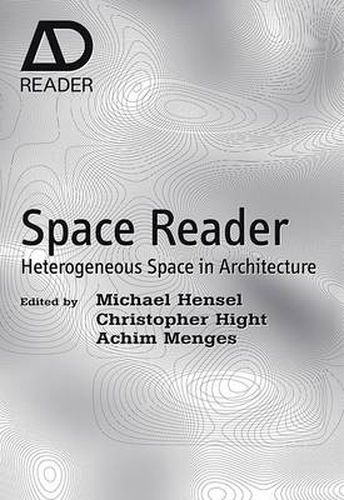Readings Newsletter
Become a Readings Member to make your shopping experience even easier.
Sign in or sign up for free!
You’re not far away from qualifying for FREE standard shipping within Australia
You’ve qualified for FREE standard shipping within Australia
The cart is loading…






The Space Reader provides a highly pertinent and contemporary understanding of space for a new generation of students and architects. It espouses a definition of space that is heterogeneous (an object or system consisting of a diverse range of different items). An example of heterogeneous space, for instance, is Manhattan where complex and multiple social and technological conditions are overlaid. (This is to be contrasted with highly centralised and ordered Modernist cities.) With the onset of globalisation and the Web, heterogeneneous space, with its emphasis on differentiation, is more relevant to the contemporary condition, which encourages the mixing of space, than a much more static conception of Modernist space. This book foregrounds spatial issues and the potential of heterogeneous space through a threefold strategy: 1) Its compilation of seminal essays on the discourse of heterogeneous space. These are to include previously published key texts by Reyner Banham, Andrew Benjamin, Robin Evans, Jeff Kipnis and Henri Lefebvre, as well as new texts by important contemporary commentators, such as Mark Cousins, Werner Durth and Anthony Vidler. 2) By commenting on these seminal texts and drawing links between them. 3) By distilling from the first two efforts a contemporary outlook on a discourse of heterogeneous space that is of future significance.
$9.00 standard shipping within Australia
FREE standard shipping within Australia for orders over $100.00
Express & International shipping calculated at checkout
The Space Reader provides a highly pertinent and contemporary understanding of space for a new generation of students and architects. It espouses a definition of space that is heterogeneous (an object or system consisting of a diverse range of different items). An example of heterogeneous space, for instance, is Manhattan where complex and multiple social and technological conditions are overlaid. (This is to be contrasted with highly centralised and ordered Modernist cities.) With the onset of globalisation and the Web, heterogeneneous space, with its emphasis on differentiation, is more relevant to the contemporary condition, which encourages the mixing of space, than a much more static conception of Modernist space. This book foregrounds spatial issues and the potential of heterogeneous space through a threefold strategy: 1) Its compilation of seminal essays on the discourse of heterogeneous space. These are to include previously published key texts by Reyner Banham, Andrew Benjamin, Robin Evans, Jeff Kipnis and Henri Lefebvre, as well as new texts by important contemporary commentators, such as Mark Cousins, Werner Durth and Anthony Vidler. 2) By commenting on these seminal texts and drawing links between them. 3) By distilling from the first two efforts a contemporary outlook on a discourse of heterogeneous space that is of future significance.